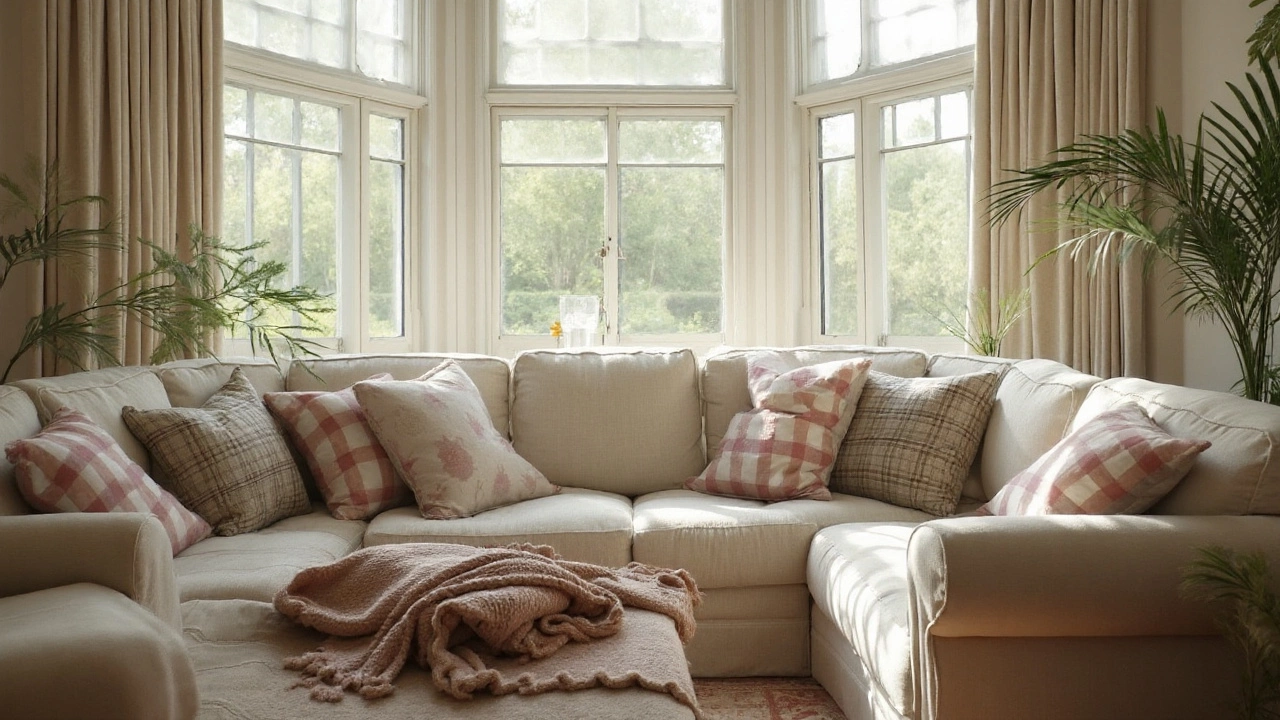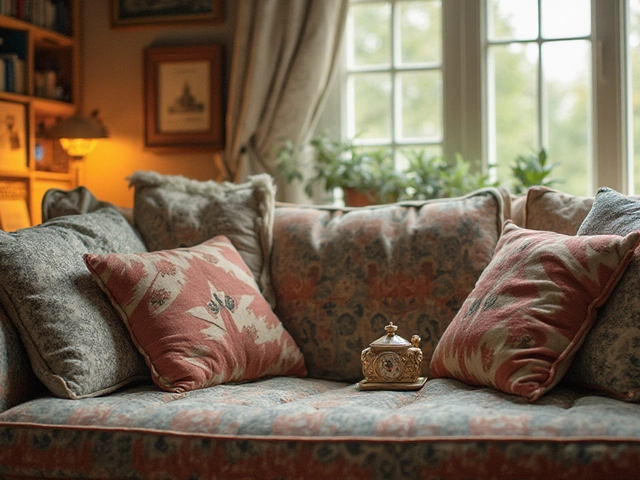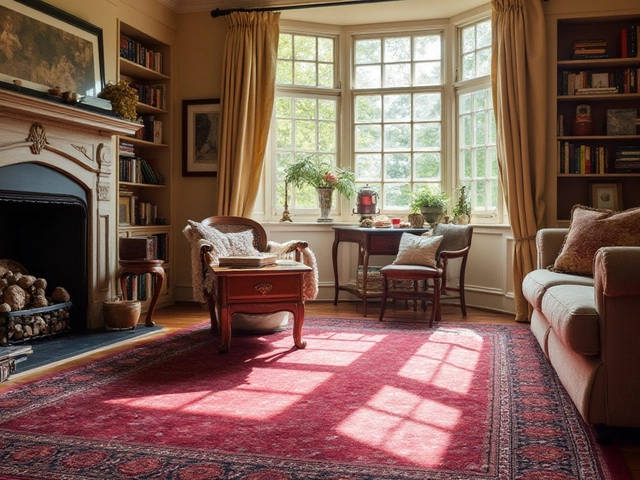Most Popular Sofa Size: Finding the Perfect Couch Dimensions for Your Space

Tiny Auckland flats, sprawling New York lofts, open-plan Aussie townhouses—everyone’s hunting for that Goldilocks couch. Not too big, not too small, just sofa-perfect. But what size really hits the bullseye for most people? The answer’s not as basic as it looks; it’s tangled up with trends, logistics, apartment quirks, and that irresistible urge to snap up the comfiest seat for movie marathons or Sunday napping. Ever tried shifting a monster couch into a snug third-floor flat with no lift? You’ll soon see why sofa sizing is a hot topic everyone argues about when it comes to picking the main piece in their lounge.
Standard Sofa Sizes: Why 3-Seaters Rule the Roost
Open any home magazine or scroll through local furniture stores, and one number pops up again and again: about 84 inches, or 213 cm. That magic number belongs to the classic three-seater sofa—easily the world’s top pick. Here’s why this size reigns supreme. First, it hits the ‘just right’ spot—plenty of room for three without swallowing whole living rooms or squeezing past the TV. In practice, these sofas measure anywhere between 78 to 90 inches (around 198–229 cm), but 84 inches gets the sweet spot award. The back height usually hangs around 30 to 36 inches, while seat depth lands around 22 inches. This gives people enough sprawl space but still fits into most flats and standard doorways. Even in New Zealand’s famously cozy apartments, a 3-seater usually slides in hassle-free.
Let’s talk stats: a recent survey by a big Kiwi furniture retailer found over 60% of their sofa sales were three-seaters. Whether you’re single, a flatmate, or a family, this size always seems to work. For parties, there’s enough stretch for friends (even if they get a bit squished). For lazy Sundays, you can lie down with your legs up—no need to tangle for elbow room. And thanks to modular and sectional designs, three-seaters now come in versions that click together or fold into beds, ticking practical boxes for small homes. Brands like IKEA, Freedom, and Nood keep their best-selling models in this range too.
Why not the mighty corner or L-shaped sofa as the default? Simple: they look fabulous but hog space, and if you’re renting or move often, wrangling one up a stairwell is nightmarish. That’s where three-seaters win—moveable, not too fussy, and totally flexible with where they end up in your home, be it against a wall or floating in open space. City dwellers love them, and parents with kids think they’re large enough for games or family movies without tripping over the dog’s tail. Bottom line: for most people, one size fits most, and the 84-inch sofa rules living rooms across the globe for good reason.
Breaking Down the Numbers: Dimensions That Actually Work
Let’s peel back the tape measure and get into the real figures. When people talk about ‘standard’ sofas, it’s not marketing fluff—they’re talking about what slips through New Zealand’s (and most other country’s) front doors and squeezes into everyday living spaces. Standard three-seater sofas, as mentioned, are usually 84 inches (213 cm) long. The seat height (the bit from floor to where you plonk yourself) is typically about 18 inches (46 cm), making it comfy for most adults to sit without that weird dangling-legs feeling. The seat depth (think back to front cushion) will be somewhere in the 21 to 24 inches (53 to 61 cm) ballpark. Too deep and you’ll slump—or totally disappear if you’re short. Too shallow and it’s like perching, not lounging.
Slimmer homes or apartments (which are pretty common in Auckland and Wellington) might do better with a ‘loveseat’—think 60 inches (152 cm) wide, just enough for two. But most folks squeeze in a full three-seater even in open-plan apartments, especially as designers are making slimmer, more urban-friendly frames these days. The easy trick: always measure your doorways and hallways before falling for a sofa in-store or online. It sounds obvious, but you’d be shocked how many get stumped when their dream couch refuses to budge on the stairs. Most manufacturers show width and height, but don’t ignore depth—a surprise offender for door snags.
Heavy-duty sofas (recliners or sectionals) often stretch to 110 inches (279 cm) or more. These aren’t for the faint-hearted or for anyone renting a 65-square-metre city flat. But, for big families or people with sprawling entertaining areas, longer sofas or sectionals are a must. Just don’t forget the golden rule: your sofa should not overpower the space. If you want a shortcut, experts suggest leaving at least 18 inches (46 cm) between the sofa and coffee table, and at least a metre from other heavy furniture.
And don’t underestimate arms. Chunky arms eat up seating space—a three-seater with fat, puffy arms might barely seat two adults comfortably, while a narrow-armed 84-inch model feels heaps bigger. Measure the inside seating length to see what you’re really getting. As a daily detail, most sofas sit low to the ground—a style trend that helps rooms feel more spacious, but might be tough for elders who hate getting up from a squish. Aim for a balance between style, comfort, and what genuinely fits your household.

Why Room Size, Traffic Flow, and Lifestyle Matter
Who your sofa ‘lives’ with changes the game. Let’s start with room size. The standard advice is your sofa should never take up the entire width of a wall. Interior designers usually recommend it spans about two-thirds the size of your main wall. So, if you’re working with a wall 12 feet (3.6 metres) wide, then an 84-inch three-seater is ideal—leaving just enough breathing space for side tables or a cheeky plant. If the room’s tiny, a full-size sofa cramps the vibe and steals precious floor area, making it hard to walk around or open doors without a shuffle. Don’t guess; use painter’s tape or cardboard cut-outs to mark the sofa footprint before splurging.
Traffic flow is another curveball. You don’t want everyone climbing over the couch to pass through the room. The best layout leaves clear walkways—at least 30 inches (76 cm) between the sofa and other large furniture pieces, or you’ll have a bottleneck when mates come over. In New Zealand, where open living is the rage, sofas often anchor the dining/kitchen/lounge floods of space. That means the standard size works, as it’s big enough to define ‘the living zone’ without blocking views or doors.
Lifestyle shapes your pick, too. If binge-watching series is your thing, seat depth and cushion comfort trump fiddly style. Families with kids or pets need easy-clean fabrics and tough frames. Got a mate who always crashes on your couch? A sofa-bed version at the same standard size is a win. Apartment people need sofas that break down (modular), or ones with shorter arms to fit snug spots. People who throw parties might want an L-shaped sofa, but remember—those are usually 90 to 113 inches (229 to 287 cm) and can dominate the room if you’re not careful. A 3-seater keeps things flexible if you move often, or love rearranging furniture (guilty!).
And those Instagram-perfect oversized couches you see? Gorgeous, sure, but lugging one up narrow heritage stairs (like half the houses in Auckland suburb Mount Eden) is no fun. If you’re a flat-dweller or renters, always check furniture dimensions against your actual access routes. Even a few extra centimetres can mean the difference between a happy delivery and a panicked Craigslist posting to sell it.
Fabric, Function, and Inside Tricks to Max Out Your Sofa
So you’ve got the size sussed. Next, think fabrics and hidden upgrades. People often forget this, but upholstery style totally changes the feel (and even the look) of a sofa. Light fabrics like linen or cotton lifts smaller spaces—you get the illusion of more room. Dark leather or deep velvets make a statement and can look smaller than they are. Leather’s a popular Kiwi pick because it wipes down after beach days, but softer fabrics stop you sticking to the couch in summer (especially true in humid Auckland). There’s also a “double-dipping” move: choose a neutral sofa, then rotate bright cushions and throws for a fresh look each season. Teal and mustard are on-trend for 2025, in case you’re feeling bold.
Want extra value? Hidden storage. Lots of standard-size sofas now come with lift-up seats, storage compartments or clever hidden pockets for remotes, chargers, or (let’s be real) old magazines. Got mates who visit but no spare bed? The standard 84-inch width converts smoothly into a double sofa-bed, making it the MVP for overnight guests. Families often go with tightly woven fabrics because little spills and sticky fingers wipe off easily, and removable cushion covers save the day on laundry day. Some brands, like King Living or Freedom, let you custom order the arm shape or cushion density—handy if your idea of comfort is different from your partner’s.
Don’t ignore feet, either. Modern sofas often hover on slim metal or wooden legs. That makes cleaning underneath a breeze, and visually lifts the whole lounge. If you’ve got robovacs (because, why not?), make sure the 11–12 cm under the couch is clear for them to squeeze through. Want your lounge to look fancy but budget is tight? Get a standard-size sofa, then upscale with plush cushions, a bold rug underneath, and a cool coffee table in front. No one will notice you didn’t splash out on a $4,000 designer number.
Here’s a pro tip: add a chaise. Some three-seaters now come with a bolted-on or sectional chaise piece, letting you stretch out—almost like a mini L-shape—but without the monster dimensions. These hybrids are selling out across Auckland because they bring the best of both worlds: nap-ready, yet not sofa-mammoth in your home.

Real-Life Examples and Buying Shortcuts
The proof’s in real living rooms. Check out most new builds across Auckland—or rentals during student season—and you’ll find three-seater sofas slotting in like they were born there. I once helped a friend haul a 90-inch L-shaped beast into her apartment, only to find the elbow wouldn’t turn the stairwell. Lesson: measure every route, every time. Even pro delivery crews can’t magic a giant sofa round a right-angle landing. For older homes with tight doors, look for sofas that come apart (bolted arms and legs, detachable backs, or even flat-pack options like IKEA’s famous “FÄRLÖV” or Nood’s “Burton” three-seater).
Big families, or households who love movie nights, might stretch up to a 100-inch sectional—but only in huge, open-plan spaces. But far more people (and virtually all young renters) go back to the 84-inch staple because it just works for most life stages. When I lived in the city centre, my flat had a tiny balcony and a narrow lift. We bought a low-profile three-seater online, checked the width would fit the elevator, and it was a stress-free move-in. Spend a few hours “test sitting” in showrooms—cushion support makes a huge difference, and what looks good on a screen might slump in reality. Don’t let style trump comfort if you’ll be using your sofa every day.
If you’re in doubt, use this cheat sheet: living rooms under 15 square metres (that’s about 160 square feet) suit a loveseat or small three-seater—look for sofa widths of 70 to 80 inches (178 to 203 cm). Most Kiwi apartments up to 20 square metres go fine with a standard three-seater. For anything larger, or multi-generational households, more modular sofas allow you to play with shape and size—just count up who sits down most nights and measure the practical reach of everyone’s legs, not just the design spec. Never forget weight—standard sofas can weigh 45–65 kg, but big sectionals can top 100 kg, so get help for those stairs!
Online reviews add another layer. Lots of people praise mid-sized couches for being a breeze to keep clean (key for Airbnbs and busy families), and high-density foam cushions keep their shape way longer than cheaper fillings. Look for guarantees: couches meant to last will always come with at least a 5- to 10-year frame warranty. It’s worth checking for removable covers, especially if you love changing things up or have kids/pets with a taste for drama.
Your perfect sofa size matches your home, your lifestyle, and your back’s happiness. Measure. Compare options. See what your friends actually use. Look out for delivery access, too—there’s nothing worse than watching your dream couch heading back on the truck because it’s a few inches too big for the staircase. So, next time someone asks “What’s the most popular sofa size?”, you know the answer’s not just a number. It’s smart, it’s practical, and it fits almost everywhere: the sofa size of 84 inches is the king of couches—with a few knocks and bangs along the way. Happy lounging!





